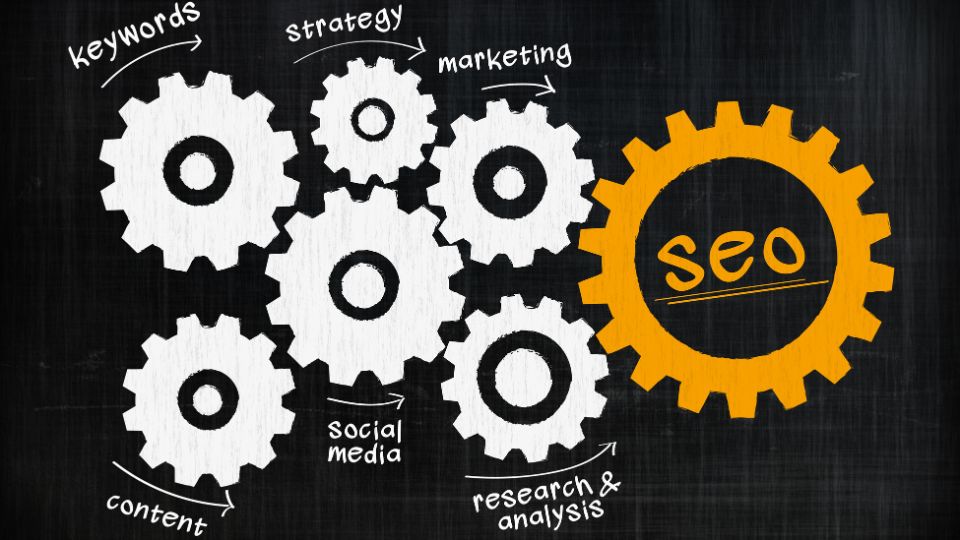
As an experienced SEO expert, let’s dive deep into what SEO (Search Engine Optimization) truly entails. I’ll share insights, backed by data and practical examples, to help you understand how to harness SEO for real-world results.
- Understanding SEO: A Foundation for Success
- SEO vs. SEM and PPC: What’s the Difference?
- Why Is SEO Important?
- The Three Pillars of SEO: Technical, On-Site, and Off-Site
- SEO Specializations: Tailoring Strategies for Specific Needs
- How SEO Works: The Mechanics Behind the Magic
- Measuring SEO Success: Data-Driven Insights
- Continuous Learning: Stay Ahead of the Curve
- Conclusion: SEO – A Long-Term Investment with High Returns
The table below summarizes the essential components of “The Ultimate Guide to Search Engine Optimization.” It outlines the key sections of the guide, highlighting the primary focus and key insights of each. This summary serves as a quick reference for understanding the foundational principles of SEO, the differences between SEO, SEM, and PPC, and the importance of SEO in driving sustainable online success. It also emphasizes the importance of continuous learning and specialization in SEO, providing a clear pathway for marketers to enhance their website’s visibility and authority in search engines.
| Section Title | Primary Focus | Key Insights |
|---|---|---|
| Understanding SEO | Foundation of SEO | SEO improves website visibility in search engines like Google and Bing, driving organic traffic. |
| SEO vs. SEM and PPC | Differentiating SEO from SEM & PPC | SEO focuses on organic traffic, SEM includes both SEO and PPC, and PPC is a paid strategy for quick visibility. |
| Why Is SEO Important? | Importance of SEO for Online Success | SEO enhances visibility, builds trust, and is cost-effective compared to paid campaigns. |
| The Three Pillars of SEO | Core Components of SEO | Includes Technical SEO, On-Site SEO, and Off-Site SEO for comprehensive optimization. |
| SEO Specializations | Tailoring SEO to Specific Needs | Different strategies for Ecommerce SEO, Local SEO, and News SEO depending on business goals. |
| How SEO Works | The Mechanics of SEO | Involves crawling, indexing, ranking algorithms, and continuous optimization. |
| Measuring SEO Success | Data-Driven SEO Insights | Key metrics include organic traffic, bounce rate, and conversion rate; tools like Google Analytics are essential. |
| Continuous Learning | Staying Updated with SEO Trends | Importance of keeping up with industry changes and best practices through learning and engagement. |
| Conclusion | The Long-Term Benefits of SEO | SEO is a long-term investment that builds sustainable online success and profitability. |
Understanding SEO: A Foundation for Success

SEO, or Search Engine Optimization, is the process of optimizing your website to improve its visibility in search engine results, primarily Google, Bing, and others. The core objective is to attract visitors who are actively searching for products, services, or information that you offer.
The Impact of SEO: Did you know that organic search drives 53% of all website traffic? This fact alone underscores the importance of SEO in digital marketing. By 2028, the global SEO industry is projected to reach a staggering $122.11 billion, reflecting its critical role in driving business outcomes.
SEO vs. SEM and PPC: What’s the Difference?

It’s essential to differentiate between SEO, SEM (Search Engine Marketing), and PPC (Pay-Per-Click) to fully leverage each strategy.
- SEO: Focuses on driving organic (unpaid) traffic from search engines. This is the foundation of long-term, sustainable online visibility.
- SEM: A broader term that encompasses both SEO and PPC, combining efforts to capture both organic and paid traffic.
- PPC: A paid strategy where advertisers pay each time a user clicks on their ad. While effective for immediate visibility, it’s often more expensive and doesn’t build the same long-term authority as SEO.
A Practical Example: Imagine SEM as a coin, with SEO on one side and PPC on the other. Both are necessary for a balanced strategy, but each has its strengths. While PPC might provide quick wins, SEO is what builds lasting online presence and authority.
Why Is SEO Important?

SEO isn’t just another marketing buzzword; it’s a pivotal strategy that influences your bottom line. Here’s why:
- Visibility and Traffic: High-ranking pages receive more clicks, and more clicks mean more opportunities for conversion. Consider this: 75% of users never scroll past the first page of search results.
- Trust and Credibility: Websites that rank higher are often perceived as more trustworthy and authoritative by users.
- Cost-Effectiveness: Unlike paid campaigns that stop driving traffic once the budget is exhausted, SEO continues to deliver results over time, making it a highly cost-effective marketing strategy.
The Three Pillars of SEO: Technical, On-Site, and Off-Site

Successful SEO strategies rely on three core components: Technical SEO, On-Site SEO, and Off-Site SEO.
- Technical SEO:
- Website Architecture: Ensuring that your site is easily crawlable and indexable by search engines is critical. For example, sites with well-structured URLs and internal linking see better crawl efficiency.
- User Experience (UX): Fast-loading, mobile-friendly sites with a secure (HTTPS) connection rank better. Google’s Core Web Vitals are a key metric here.
- Structured Data: Implementing schema markup helps search engines understand your content better, potentially leading to enhanced search result features like rich snippets.
- On-Site SEO:
- Content Optimization: Quality content that addresses user intent is king. Use relevant keywords naturally, ensure content is well-structured, and regularly updated.
- Meta Tags: Optimize title tags, meta descriptions, and header tags to improve both SEO and click-through rates (CTR).
- Multimedia Use: Incorporating images, videos, and infographics can enhance user engagement and make content more shareable, which can indirectly boost SEO.
- Off-Site SEO:
- Link Building: Quality backlinks from reputable websites are crucial for establishing your site’s authority. The more authoritative the linking site, the more valuable the backlink.
- Social Signals: While social media activity doesn’t directly influence rankings, it can drive traffic to your site and increase content visibility, which can indirectly support your SEO efforts.
- Brand Building: Establishing a strong brand presence online helps build trust and credibility, which can enhance your SEO through increased branded searches and positive mentions across the web.
SEO Specializations: Tailoring Strategies for Specific Needs

SEO isn’t one-size-fits-all. Depending on your business, you might need to specialize:
- Ecommerce SEO: Focuses on optimizing product pages, category structures, and faceted navigation to drive sales.
- Local SEO: Essential for businesses that serve specific geographic areas. This involves optimizing your Google My Business listing and building local citations.
- News SEO: For news websites, speed and indexation are critical. Getting into Google News and optimizing for Top Stories are key strategies.
Case in Point: A local restaurant focusing on Local SEO can optimize for “best sushi near me,” leading to higher visibility on Google Maps and local searches.
How SEO Works: The Mechanics Behind the Magic

SEO is both an art and a science, involving several key processes:
- Crawling & Indexing: Search engines use bots to crawl the web and index pages. Ensuring your site is easily crawlable is the first step toward good SEO.
- Ranking Algorithms: Complex algorithms determine the relevance and quality of your pages based on various signals like content, links, and user experience.
- Continuous Optimization: SEO is not a one-time task. It requires ongoing efforts to update content, build links, and optimize technical aspects as search engines and user behaviors evolve.
Example: A well-optimized blog post that answers specific user queries can rank for years, driving consistent traffic, provided it’s regularly updated and remains relevant.
Measuring SEO Success: Data-Driven Insights

To ensure your SEO efforts are paying off, constant monitoring and analysis are crucial:
- Key Metrics: Focus on metrics like organic traffic, bounce rate, conversion rate, and keyword rankings to gauge performance.
- Tools: Use tools like Google Analytics, Google Search Console, and specialized SEO platforms (like Ahrefs or SEMrush) to track and analyze your data.
- Reporting: Regularly assess your progress and adjust strategies based on the data. Reporting should align with your business goals, whether that’s increasing traffic, improving rankings, or boosting conversions.
Practical Advice: Set up automated reports to keep track of your KPIs and make informed decisions based on trends over time.
Continuous Learning: Stay Ahead of the Curve

SEO is dynamic, with algorithms constantly evolving. Staying updated through trusted resources and continuous learning is key to maintaining and improving your SEO strategies.
Recommendations: Follow SEO news sites like Search Engine Land, attend industry conferences, and engage in online communities to stay informed about the latest trends and best practices.
Conclusion: SEO – A Long-Term Investment with High Returns

SEO is not a quick fix but a long-term strategy that builds the foundation for sustainable online success. By understanding and implementing the principles outlined in this guide, you can significantly enhance your website’s visibility, authority, and ultimately, its profitability.
Whether you’re a small business or a large enterprise, investing in SEO is investing in the future of your online presence.